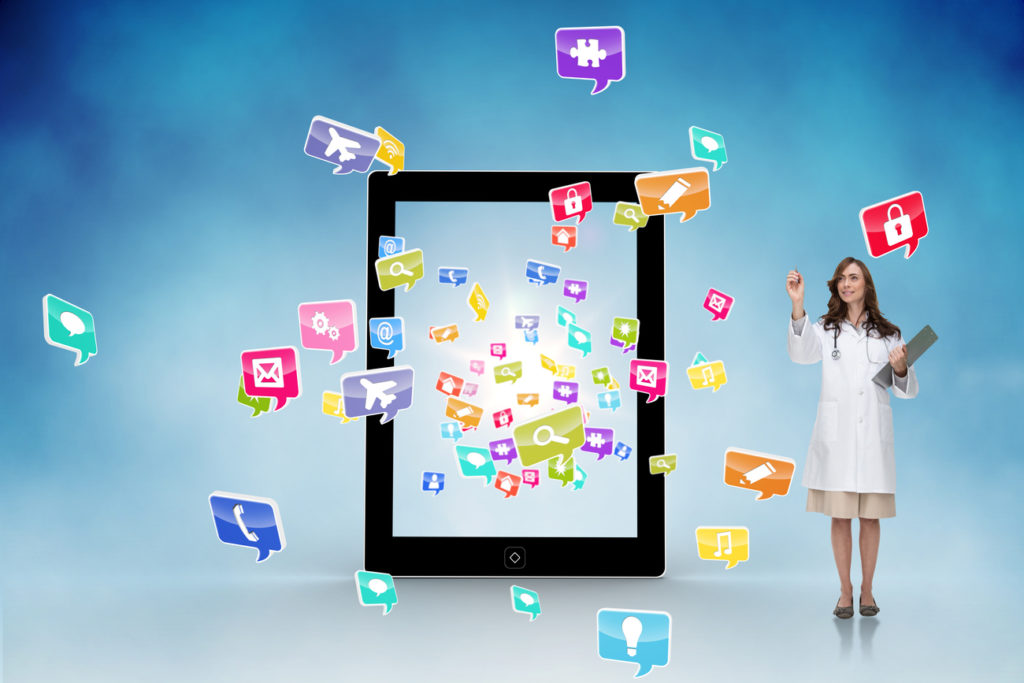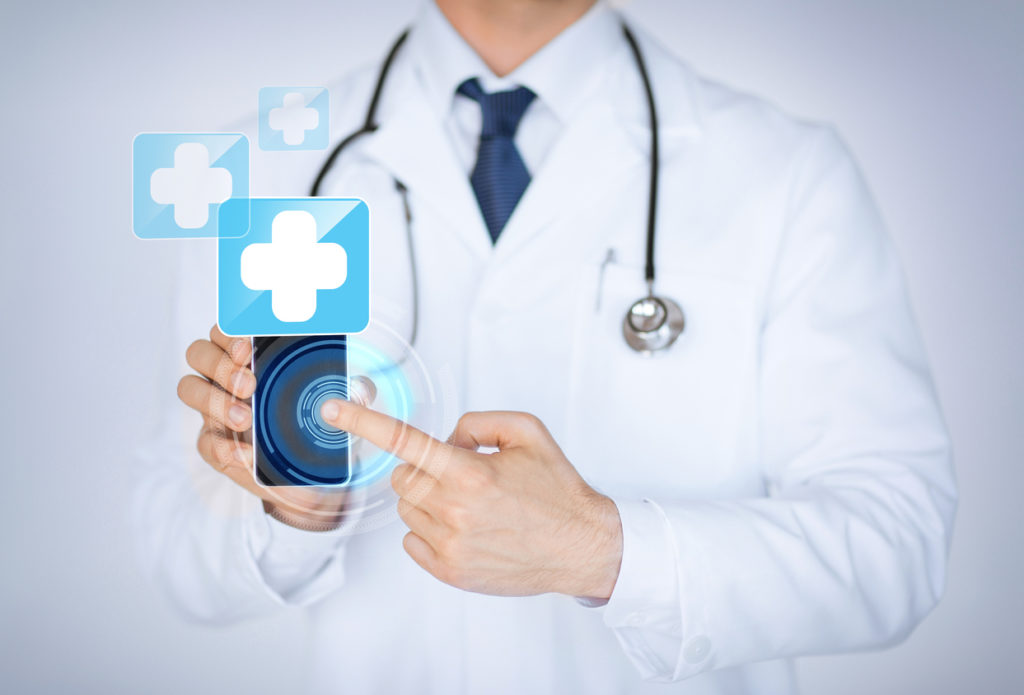Creating Innovative Healthcare Apps for Your Medical Practice

Healthcare apps can be useful tools for facilitating better doctor-patient communication.
At some point in our lives, we’ve all searched for answers to health questions on sites like WedMD®. Many of us have probably received results that were exaggerated or wildly inaccurate. Many people use their smartphones to educate themselves about health conditions, but there remains a lack of dependable healthcare apps.
That’s where your practice comes into the picture. Healthcare apps, when used and developed properly, can be invaluable tools for doctor-patient communication. Physicians can remotely monitor high-risk patients and easily access medical records, while patients can save the time and energy which would otherwise be spent on frequent office visits. The objective of your healthcare app should be to improve physician workflow and patient safety.
The Features of Patient-Oriented Healthcare Apps
The goal of utilizing healthcare apps is to promote doctor-patient communication. Doctors are generally unaware of the condition of their patients between office visits. Apps give a more comprehensive report on patient needs, day-to-day. They even possess video conferencing and voice calling features for instances of urgent inquiries and needs.
Patients also have more freedom to manage their recovery options outside of the doctor’s office. They can use the app for dosage reminders, pharmacy locators, recording vitals and performing supervised rehabilitation exercises at home.
Creating a patient-oriented app means improving workflow for both physicians and nurses. This allows more time and attention to be dedicated to individual patients, especially those who need it the most. Apps can aid doctors in analyzing test results, helping them make faster and more informed clinical decisions. Recent technology even includes features that significantly for blood pressure, glucose levels, and heart palpitations.

The technology of healthcare apps is still fairly new, but knowing the pitfalls and how to avoid them can help your practice create a highly dependable and patient-friendly app.
Knowing the Pitfalls and How to Avoid Them
The tools within a precise and comprehensive healthcare app should provide diagnostic functions comparable to those found in a medical practice. As previously stated, medical app technology is still relatively new. To improve the accuracy of features within the app, here are a few tips:
For instance, if you find that the EKG function does not work accurately on a smartphone, one way to resolve this issue is to link the EKG device to the app. You can also do this with other machines such as insulin pumps or blood pressure monitors. Most medical devices nowadays can be programmed to work in combination with computers and smartphones via Wi-Fi or Bluetooth™. New technologies are constantly in creation, and your healthcare app will be able to take advantage of those features as they come along.
However, it is important to remember that the app should be used mainly as a personal health record. Each patient can then facilitate a more informed doctor-patient relationship, not render medical equipment obsolete. It should serve as a point of contact that, when used correctly, can greatly improve the way you run your practice.
Getting Patients to Download Your App
Many medical practices face the challenge of convincing patients to download their app. Overcoming that obstacle means first letting people know that your app exists. One way to do this is broadcasting the launch of your app on Facebook or Twitter. Many people browse social media sites on their smartphones and if you post a download link to your practice’s page, it will likely re-direct to an app store of some kind.
Organic promotion is an excellent way to let your patients know about your app’s unique features. Posting to a Facebook page also means that people can ask questions and provide feedback in the comments section. Ask your patients to post reviews to the app store, and showcase these positive reviews on your social media page.
You want to post material regarding your app that is going to generate buzz. In posts about your app, ask questions like, “What is one thing that could improve your experience during doctor’s appointments?” Speaking to people’s healthcare needs creates interesting discussions on what patients want to change about seeing a physician. Getting your social media followers to engage with your posts means that other users will also see their activity. This garners the attention needed for more patients to download your healthcare app.
Social media has proven to be a formidable tool in medical marketing. Learning to use its far-reaching networking abilities properly can advance your practice ahead of the competition. Creating a cutting-edge healthcare app is adding another invaluable facet to your practice’s digital presence. MedINFOtech is dedicated to helping your practice navigate digital spaces. We hope that this information has helped guide your decision towards creating more innovative healthcare apps.


